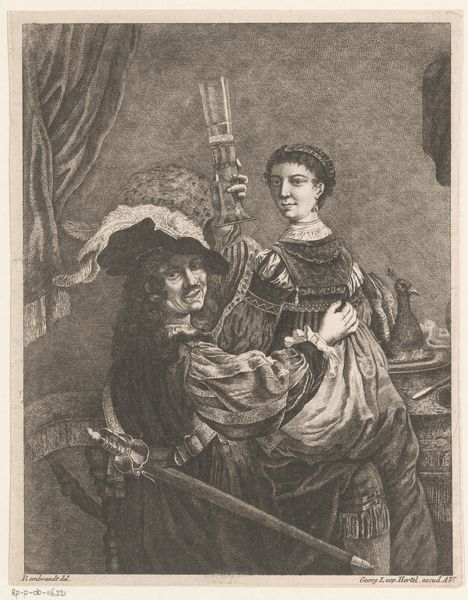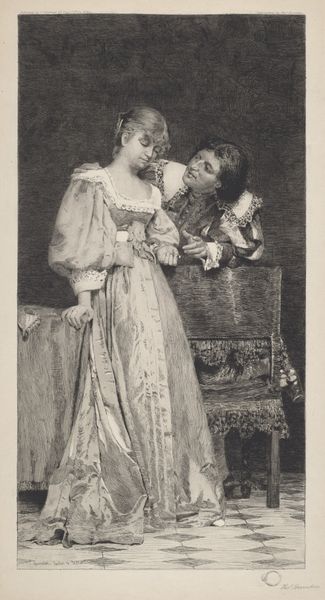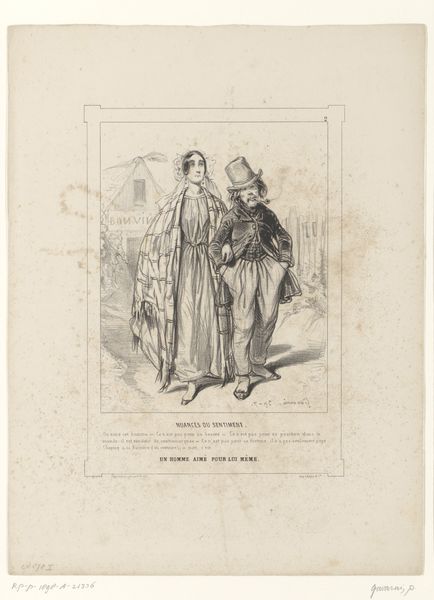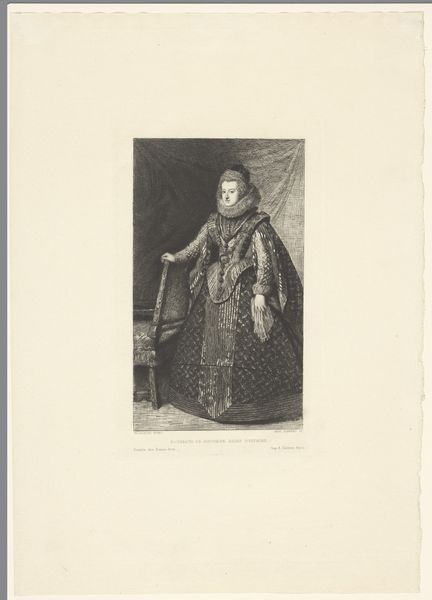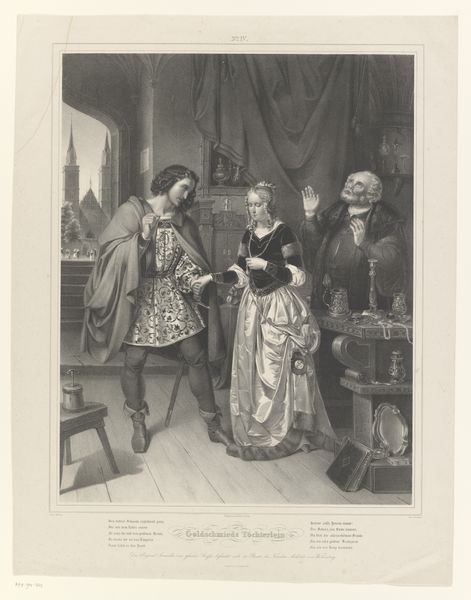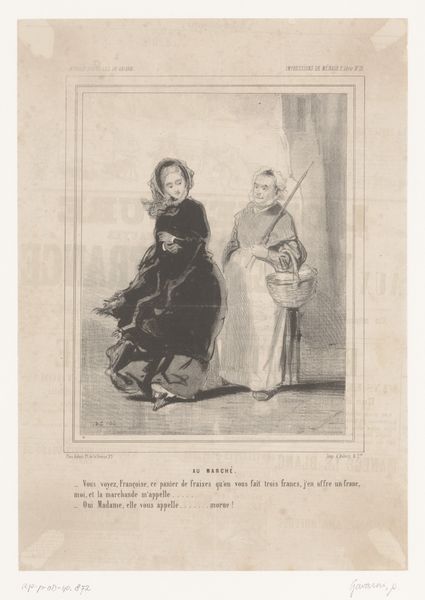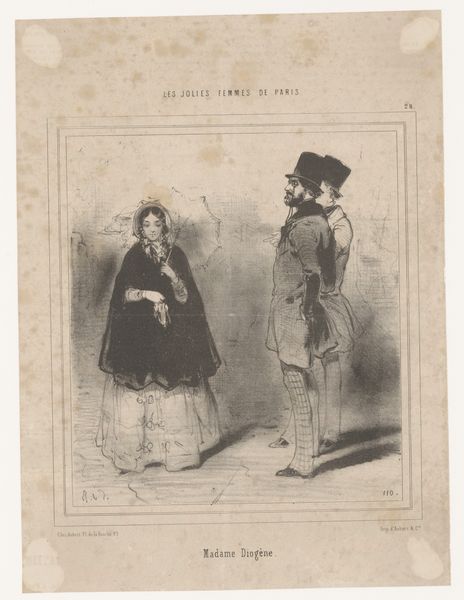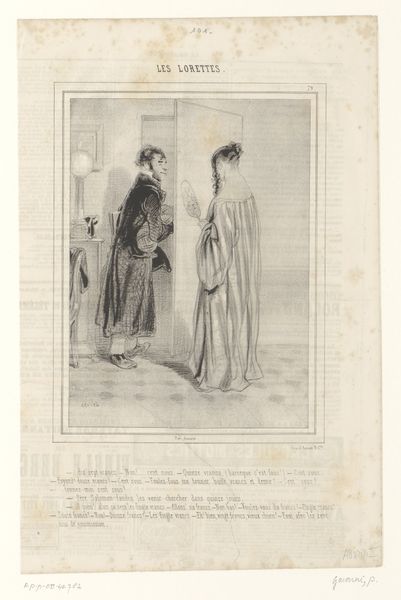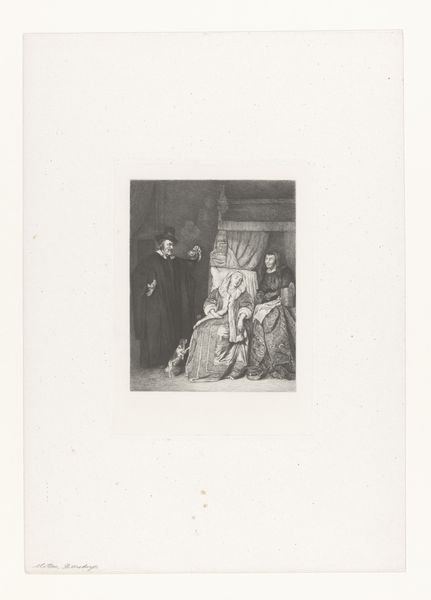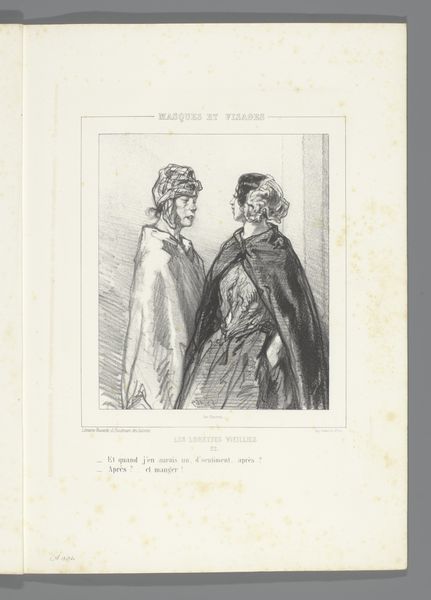
drawing, print, etching
#
portrait
#
drawing
# print
#
etching
#
figuration
#
pencil drawing
#
romanticism
#
men
#
history-painting
Dimensions: Image: 9 3/4 x 7 3/16 in. (24.8 x 18.2 cm) Sheet: 11 1/8 x 8 1/16 in. (28.2 x 20.4 cm)
Copyright: Public Domain
Curator: This etching, rendered by Eugène Delacroix between 1834 and 1843, offers a fascinating glimpse into the theatricality of Hamlet. Its title? "Polonius and Hamlet." Editor: There’s a certain weight in those etched lines. Even without color, I feel the somber mood settling. It looks like an old memory resurfacing. Curator: Memory is a strong throughline in Delacroix's piece. Polonius, with his exaggerated robes and pointed staff, embodies the aging advisor clinging to power. His visual language carries over into numerous works referencing hierarchical tension and even manipulation through symbolic objects and clothing. Editor: And Hamlet. His expression is unreadable – like he is not quite there, in his own world. Look at how Delacroix catches him with the book; those gestures are saying something. What do you read into that open book, held so passively? Curator: That passivity is key, I think. The open book often symbolizes a confrontation with knowledge or fate, the precipice between ignorance and awareness. Here, Hamlet appears almost suspended, not quite engaging with what's before him, signaling a deeper, internal conflict. Consider its repetition as a signifier. Books frequently symbolized truth in the Middle Ages, and, by extension, enlightenment in Romanticism. Editor: I think of the theatrical element here, like Delacroix caught these characters backstage, ready to embody a role for life. You feel that this very piece wants to represent a feeling through figures and an expression of humanity beyond the text on the page. Curator: Absolutely. This print allows us to reflect on the continuing fascination of the play itself. Its enduring relevance resides, in part, in the power of iconic depictions. The very fact that we recognize Polonius immediately is itself a testament. Editor: Well, I’m newly appreciating how Delacroix transforms the literary into a visible echo. The space between characters, their physical stances and even the quality of etching are all equally loaded and add to that experience of the ‘original scene’ in front of our eyes. It's made me consider the other dimensions a picture brings forth in contrast to text, in the mind's eye.
Comments
No comments
Be the first to comment and join the conversation on the ultimate creative platform.
